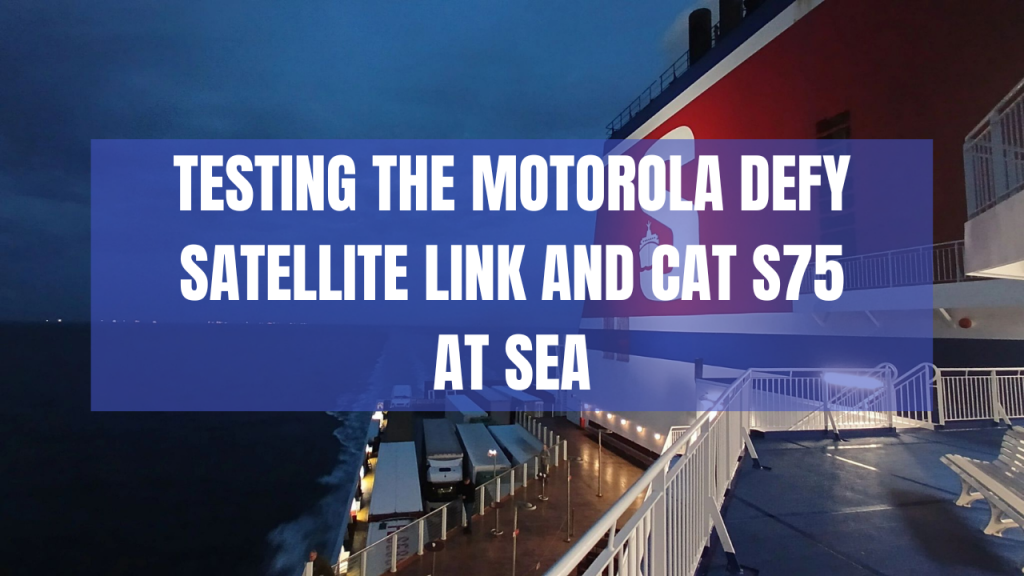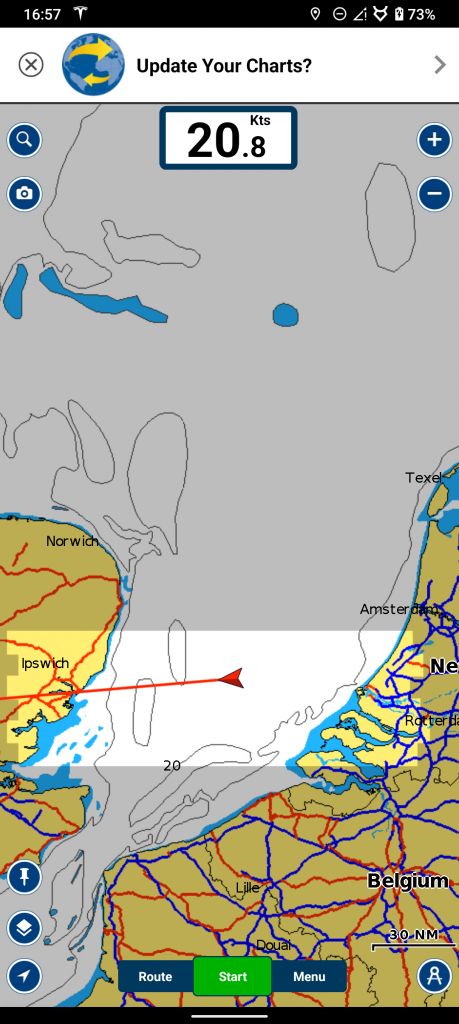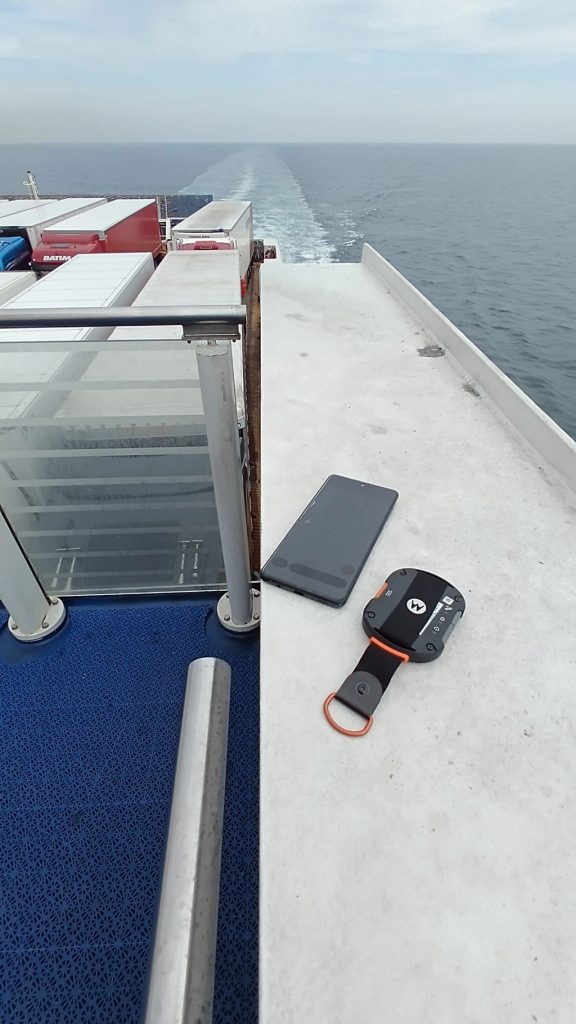
You only have to look at my LinkedIn to know I have a passion for the sea and am always eager to get on to the water at any possible chance I get. Last month, I set out to evaluate the latest products for offshore use, the Motorola Defy Satellite Link and CAT S75 mobile handset. Checking coverage at sea as well testing out all of their benefits to offshore workers, wind farm operators, oil and gas personnel, fishermen and yachtsmen.
I conducted the review of both products aboard the world’s largest ferry, the Stena Hollandica. A ferry which operates between Harwich and the Hook of Holland. The field test focused on assessing each device’s performance in an area without any mobile phone signal – the PERFECT opportunity for a field test!
I put the Motorola Defy Satellite Link and CAT S75 to the test in the Southern North Sea whilst on passage and up to 50 miles from the shore. The Stena Hollandica had ample open deck space, ensuring a clear view of the sky and “visibility” to the geostationary satellite orbiting 22,000 miles above the Earth.

How did the Motorola Defy Link and CAT S75 perform?
My main goal in the testing was to check coverage and evaluate the reliability and effectiveness of the Motorola Defy Satellite Link and CAT S75 mobile handset in sending messages and location check-ins.
The results were promising, with both devices promptly connecting to the satellite and successfully exchanging messages. These messages were sent to friends back in the UK, but the recipients location could be anywhere in the world. The messages were received on their standard mobile phones, without the need for a satellite connection, app, or an account.
What are the messaging capabilities of the Motorola Defy Link and CAT S75?
While testing the CAT S75 and Motorola Defy Satellite Link, I was able to exchange messages between the two devices whilst on my lap. Given the two-way distance was about 44,000 miles, the latency between sending and receiving was about 15 seconds, which is impressive and workable in real-life scenarios.
Location Check-Ins
One standout feature of both devices is the ability to send location check-ins to preconfigured contacts. Both devices were capable of sending GPS coordinates with Google Maps links to recipients.
This feature could be invaluable for offshore workers, allowing them to keep their onshore teams updated on their location or track.

How to use the SOS functionality of the Motorola Defy Link and CATS75
Both the CAT S75 and Motorola Defy Satellite Link feature dedicated SOS buttons that require a prolonged press to activate. I refrained from testing this function to avoid causing an unnecessary emergency response. But when activated, a global 24/7 emergency response centre manages the SOS alert, triaging and escalating the alert to local emergency services. The manufacturers have indicated that very soon, the SOS buttons will be customisable to allow alerts to be sent to a preferred service, particularly beneficial for larger companies with their emergency response procedures.
Plans for the Future
Currently, only messaging is supported across both devices. Data and voice support are planned. For the tech enthusiasts among you, an API suite and SDK are due for release in late 2023. This will enable integration with bespoke applications and devices, allowing satellite communications for various IoT and M2M applications that currently rely on terrestrial systems or are hindered by a lack of mobile coverage.
Also planned by the end of 2023 is automatic tracking. The device will be able to ‘ping’ its location for a chosen duration and frequency. For example, every 30 minutes for the next two days. Or once per hour for the next week. The duration and frequency are editable to meet the users requirements.
In summary, the Motorola Defy Satellite Link and CAT S75 mobile handset have proven to be reliable tools for offshore professionals. Their capacity to send location check-ins and SOS alerts offers significant safety and coordination benefits in remote environments.
These devices are valuable additions to the toolkit of offshore workers, enabling connectivity even in areas without mobile coverage. The successful testing on the Stena Hollandica reaffirmed their effectiveness in challenging, coverage-limited conditions.
For more information or to order your own Motorola Defy Satellite Link or CAT S75, click here.
No Comments yet!